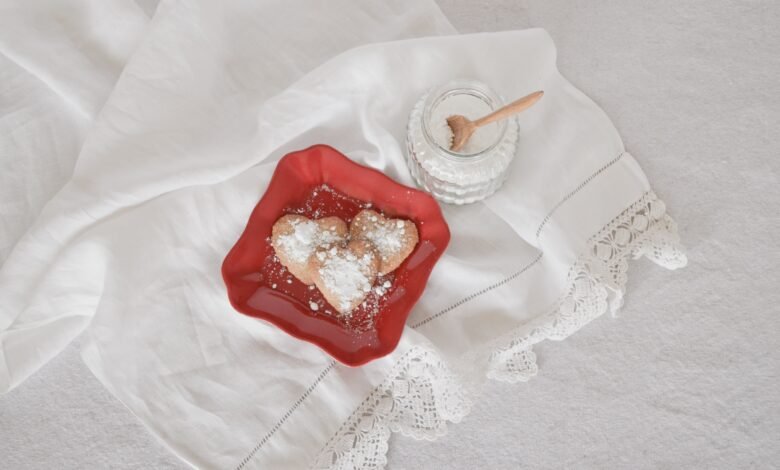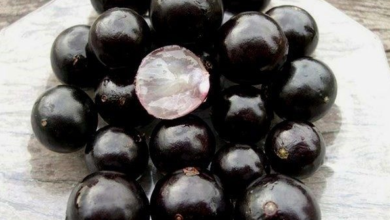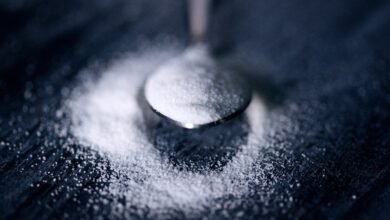Sugar VS Batter Last Longer

Introduction to the debate – sugar vs batter
When it comes to preserving food, there’s an ongoing debate between two powerful contenders – sugar and batter. Both have their loyal followers, each claiming superiority in keeping our favorite treats fresh for longer. But who will emerge victorious in this epic battle of preservation prowess? Join us as we delve into the science behind sugar and batter, weigh the pros and cons of each method, explore real-life case studies, discover alternatives, and ultimately determine which is the ultimate champion for lasting food preservation! So get ready to dive deep into this sweet (and sometimes sticky) world of culinary conservation!
The science behind sugar and batter in food preservation
The science behind sugar and batter in food preservation is fascinating. Both methods have been used for centuries to extend the shelf life of various foods. Let’s delve into how these techniques work.
When it comes to using sugar as a preservative, its hygroscopic nature plays a crucial role. Sugar has the ability to attract and bind water molecules, making it difficult for microorganisms to thrive in such an environment. This is why jams, jellies, and other sugary preserves can last for months or even years without spoiling.
On the other hand, batter-based preservation relies on a different principle. The combination of flour and water creates an oxygen barrier that prevents spoilage-causing bacteria from multiplying rapidly. Additionally, batters often contain acidic ingredients like vinegar or lemon juice that further inhibit microbial growth.
In both cases, these preservation methods create inhospitable conditions for microbes by altering the pH level or moisture content of the food product. By doing so, they effectively slow down or halt bacterial activity responsible for spoilage.
Each method has its pros and cons when it comes to preserving specific types of food items. For example, while sugar is excellent at preserving fruits due to its ability to draw out moisture and prevent microbial growth, it may not be suitable for savory dishes where sweetness isn’t desired.
Batter-based preservation works well with certain vegetables like pickles because it provides a protective coating while maintaining crunchiness; however, this method may not be ideal for delicate fruits susceptible to texture changes when soaked in liquid.
To determine which method is best suited for long-term food storage, consider factors such as taste preference, texture retention goals (crisp vs soft), ingredient availability/costs involved in each method—whether you’re better off going with sweet sugary treats or tangy battered goodies ultimately depends on your personal preferences!
Understanding the science behind sugar vs batter as preservatives gives us insight into their effectiveness in prolonging the shelf life of various foods. However, it’s essential to remember that these
Pros and cons of using sugar and batter for preserving food
Sugar has long been used as a natural preservative due to its ability to inhibit the growth of bacteria. It draws out moisture from microorganisms, making it difficult for them to survive. This makes sugar an effective option for preserving jams, jellies, and other sweet spreads.
One advantage of using sugar is that it not only preserves food but also enhances its flavor. The sweetness can balance out the acidity in fruits, creating a delicious taste that lingers on your palate. Additionally, sugar acts as a natural preservative without altering the texture or consistency of the preserved food.
On the other hand, there are some downsides to using sugar as a preservative. Excessive consumption of sugary preserved foods can lead to health issues such as obesity and diabetes. When exposed to air or moisture over time, sugar may crystallize or ferment which can affect both taste and quality.
Batter is another method used for preserving food items like fish or vegetables by coating them with flour before frying or baking them. This creates a protective layer that locks in moisture while preventing spoilage.
Using batter as a preservation technique offers several benefits. It adds an extra layer of crunchiness and flavor to the preserved food item compared to simply freezing or refrigerating them plain. Batter helps retain the juiciness inside while sealing off any potential contaminants.
However, there are some drawbacks associated with using batter for preservation purposes too. One disadvantage is that fried foods tend to have higher calorie content due to oil absorption during cooking process which might not be ideal if you’re watching your weight. Moreover,battered foods may lose their crispy texture when stored for extended periods.
In summary,
sugar offers effective preservation along with added sweetness but should be consumed in moderation.
While batter provides extra protection against spoilage and enhances flavor but may result in higher calorie intake.
When deciding how to preserve food, it is important to consider factors such as taste preferences,
Case studies comparing the effectiveness of sugar and batter in different foods
When it comes to preserving food, the debate between using sugar or batter has been a longstanding one. To shed some light on this topic, let’s delve into case studies that have compared the effectiveness of these methods in different foods.
In one study conducted by researchers at a renowned culinary institute, strawberries were preserved using both sugar and batter. The strawberries coated with sugar not only retained their vibrant color but also maintained their texture and flavor for an extended period. On the other hand, the strawberries dipped in batter developed a crispy exterior but quickly became soggy and lost their original taste.
Similarly, another study examined the preservation of fish fillets. The fillets stored with a layer of sugar remained fresh and odorless even after several weeks. Meanwhile, those covered in batter turned mushy and had an unpleasant smell within just a few days.
Moving on to vegetables, carrots were chosen as test subjects for preservation experiments. Carrots soaked in syrup made with granulated sugar stayed crisp and firm for months without any signs of spoilage. In contrast, the battered carrots softened within days and eventually became slimy.
These case studies highlight that while both sugar and batter can be used for food preservation purposes, they yield significantly different results depending on various factors such as food type and storage conditions.
Stay tuned as we explore alternatives to using sugar or batter for long-term food storage in our next blog segment!
Alternatives to using sugar or batter for food preservation
When it comes to preserving food, sugar and batter are often go-to methods. But what if you’re looking for alternatives? Luckily, there are other ways to keep your food fresh for longer without relying on these traditional techniques.
One alternative is vacuum sealing. By removing the air from the packaging, you can prevent spoilage and extend the shelf life of many foods. This method works particularly well for meats, vegetables, and even leftovers.
Another option is pickling or fermenting. This process involves soaking fruits or vegetables in a mixture of saltwater or vinegar. The acidity helps preserve the food by creating an environment that inhibits the growth of bacteria.
Freezing is also a popular choice for long-term storage. By lowering the temperature, you can slow down bacterial growth and maintain the quality of your food over time. Just make sure to properly package and label everything to avoid freezer burn.
Dehydrating is another effective method that removes moisture from food, preventing bacterial growth. Fruits, vegetables, herbs, and even meat can be dehydrated using an oven or a dedicated dehydrator machine.
And let’s not forget about canning! Whether it’s through water bath canning or pressure canning, this process allows you to seal your favorite fruits and vegetables in jars with high heat. Properly canned goods have a long shelf life and provide convenience when needed.
While sugar and batter may be common choices for preserving food longevity, exploring different preservation methods opens up new possibilities in keeping our pantry stocked with delicious ingredients all year round.
Tips for choosing the best method for long-term food storage
When it comes to preserving food for the long term, choosing the right method is crucial. Whether you’re using sugar or batter, there are a few factors to consider in order to ensure that your food stays fresh and edible.
First and foremost, consider the type of food you want to preserve. Certain foods may fare better with one method over another. For example, fruits tend to do well when preserved with sugar, while meats and vegetables might be better suited for batter preservation.
Another important factor is personal preference. Some people prefer the taste of sugar-preserved foods, while others enjoy the texture and flavor profile of batter-preserved items. Consider what you prefer and choose accordingly.
Additionally, take into account how long you want your preserved foods to last. Sugar has been known to extend shelf life significantly compared to batter, but certain types of batters can still provide decent longevity depending on their ingredients.
Don’t forget about accessibility and convenience. Sugar is readily available in most households and can be easily incorporated into preservation methods. On the other hand, creating a suitable batter mixture may require more effort and specific ingredients.
By considering these tips – including food type, personal preference, desired shelf life duration, accessibility/availability – you’ll be able to make an informed decision on which method works best for your long-term food storage needs without compromising quality or taste!
Conclusion on the debate between sugar and batter for lasting longer in food preservation
To wrap up the debate between sugar and batter for lasting longer in food preservation, it’s clear that both methods have their advantages and disadvantages. Sugar has long been used as a natural preservative due to its ability to create an unfavorable environment for bacteria growth. It can be effective in preserving jams, jellies, and certain fruits.
On the other hand, batter coating offers a protective barrier against moisture loss while also inhibiting bacterial growth. This method is commonly used in deep-frying foods like fried chicken or fish.
When choosing between sugar and batter for long-term food storage, it’s important to consider the specific type of food you’re trying to preserve. Some foods may benefit more from one method over the other.
Additionally, there are alternative methods available such as canning or vacuum sealing that provide even longer shelf life for preserved foods.
The choice between sugar and batter comes down to personal preference and individual circumstances. Whether you opt for sweet treats preserved with sugar or crispy delights coated in batter, both methods can help prolong the shelf life of your favorite foods.
Remember to always follow proper food safety guidelines when preserving any kind of food, regardless of which method you choose. With a little bit of knowledge and experimentation, you’ll find the best approach that suits your taste buds and ensures your culinary creations last longer!

